May 20, 2025 | 21:16 GMT +7
May 20, 2025 | 21:16 GMT +7
Hotline: 0913.378.918
May 20, 2025 | 21:16 GMT +7
Hotline: 0913.378.918
The Bac Huong Hoa Nature Reserve was established under Decision 479/QD-UBND dated March 14, 2007, by the People's Committee of Quang Tri province, with a total area of nearly 23.5 thousand hectares. It covers five communes in the northern part of Huong Hoa District, bordering the Lao People's Democratic Republic. This area is considered the "roof of Quang Tri" with the Sa Mu peak rising nearly 1,600 meters and the Voi Mẹp peak reaching nearly 1,800 meters above sea level.

Releasing wildlife back into their natural habitat at the Bac Huong Hoa Nature Reserve. Photo: Bac Huong Hoa Nature Reserve.
Located in the Central Annamite Range, in the western part of Quang Tri province, the Bac Huong Hoa Nature Reserve boasts a rich, diverse, and unique biodiversity. It is a zone of overlap between the North-South plant distribution and the Indochina region, with nearly 93% forest cover. The reserve features various types of habitats and vegetation, as well as numerous rare and endangered animal species.
According to survey data, the forest area of the Bac Huong Hoa Nature Reserve is home to 1,327 species of vascular plants belonging to 158 families. Among these, there are 195 endangered, rare, and precious species such as the Manni's Cephalotaxus (Cephalotaxus manii), False Podocarpus (Dacrydium elatum), Seven-leaf One-flower (Paris polyphylla), and the Paphiopedilum appletonianum orchid, among others.
In terms of animals, there are 935 species, including 97 species of endangered, rare, and precious animals. The mammal system consists of 110 species from 30 families and 10 orders; 38 species are listed in the Vietnam Red List, 33 species in the World Red List (IUCN), and 39 species in Decree 84/2021/ND-CP. Some of the endangered and rare species include: the striped rabbit (Nesolagus timinsi), Javan pangolin (Manis javanica), Siki gibbon (Nomascus siki), Ha Tinh langur (Trachypithecus hatinhensis), red-shanked douc langur (Pygathrix nemaeus nemaeus), and the Sumatran muntjac (Naemorhedus sumatraensis).
The bird system consists of 208 species from 49 families and 12 orders; 8 species are listed in the Vietnam Red List, 11 species in the World Red List, and 23 species in Decree 84/2021/ND-CP. Endangered and rare species include: the great hornbill (Buceros bicornis), Austen’s brown hornbill (Anorrhinus austeni), white pheasant (Lophura nycthemera), purple-winged pheasant (Lophura diardi), green peacock (Polyplectron bicalcaratum), and the pheasant-tailed peacock (Rheinardia ocellata), among others.
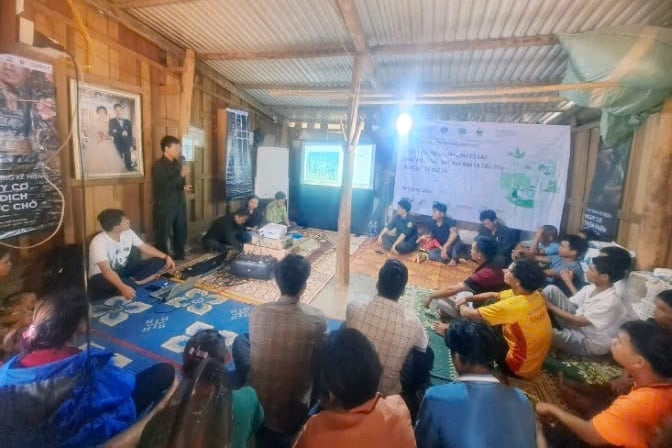
Public awareness activities to promote biodiversity conservation among local people at the Bac Huong Hoa Nature Reserve. Photo: Bac Huong Hoa Nature Reserve.
The reptile and amphibian system consists of 81 species, 56 genera, 18 families, and 3 orders. The fish fauna includes 33 species from 28 genera, 17 families, and 6 orders. Among them, the marble eel (Anguilla marmorata) is listed in the Vietnam Red List and the World Red List and requires priority protection. The insect fauna includes 503 species, 109 families, and 16 orders; 3 species that are endangered and rare, listed in the Vietnam Red List, IUCN Red List, and Decree 84/2021/ND-CP, include the tailed-jewel butterfly (Lamproptera curius), the common swallowtail butterfly (Troides helena), and the three-horned beetle (Chalcosoma atlas).
In recent years, with support from the project on Sustainable Forest Management and Biodiversity Conservation (VFBC) funded by USAID, the Bac Huong Hoa Nature Reserve has collaborated with WWF Vietnam to implement camera trap surveys aimed at detecting endangered, rare, and potentially extinct species. Notably, the program "Saola Survey using Camera Traps and Environmental DNA" is part of the "Save the Saola from the Brink of Extinction" project.
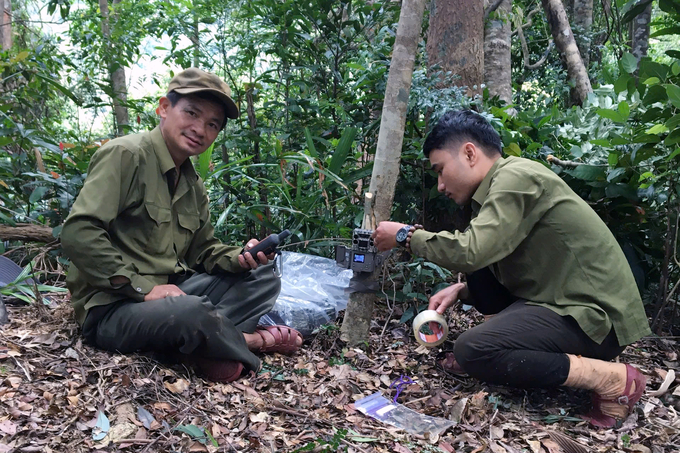
Biodiversity conservation activities at the Bac Huong Hoa Nature Reserve. Photo: Bac Huong Hoa Nature Reserve.
In 2021 and 2022, the Bac Huong Hoa Nature Reserve used 80 camera traps to survey and monitor several endangered, rare, and precious species of mammals and birds. The results recorded specific and vivid images and footage of 32 species (18 mammal species and 14 bird species). Among them, 11 species are listed in the World Red List, 18 species are listed in the Vietnam Red List, and 11 species are listed in Decree 64/2019/ND-CP. All 32 species are included in Decree 84/2021/ND-CP. Notable species recorded include: red-shanked douc, striped rabbit, Javan pangolin, muntjac, white pheasant, and purple-winged pheasant. The survey also added two endangered and rare bird species to the list: the red-throated pheasant (Arborophila rufogularis) and the chestnut-crowned laughingthrush (Garrulax castanotis).
Huong Hoa District has a low mountain terrain in the southern part of the Annamite Range, with mountain ranges over 1,000 meters high running northwest-southeast along the boundary between Quang Binh and Quang Tri provinces. The Quang Tri side has a higher, more rugged terrain with a typical slope of 15-25 degrees. The climate has the distinct characteristics of a subregion where the tropical monsoon climate and continental climate meet on the peaks of the Annamite Range. The area is home to a large river, many small rivers and streams, as well as lakes and dams. Its natural vegetation is largely pristine, with many endangered, rare, and endemic species.
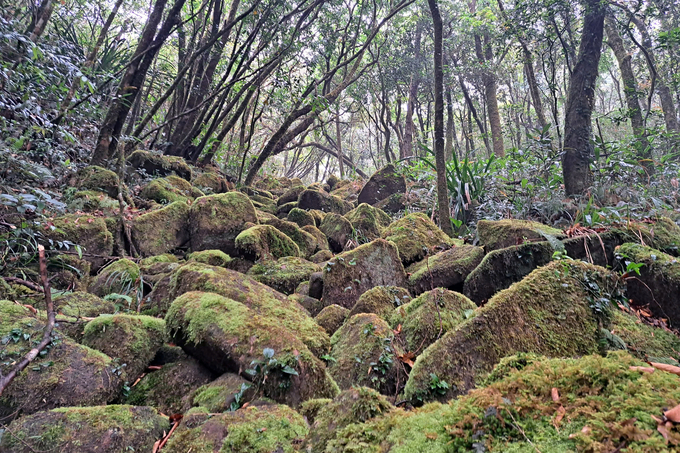
Bac Huong Hoa Nature Reserve has unique and pristine natural landscapes. Photo: Bac Huong Hoa Nature Reserve.
The characteristics of the region have created unique natural landscapes in Bac Huong Hoa, including mountains, rivers, streams, many waterfalls, and magnificent caves.
The area around the Sa Mu Pass offers beautiful scenery and cool weather at an altitude ranging from 1,000m to 1,570m above sea level, making it a potential spot for eco-tourism combined with botanical garden visits and relaxation tourism. At the top of Sa Mu Pass, visitors can camp, rest, have lunch, and engage in exploration activities; enjoy the panoramic view from the summit, and learn about the natural forest ecosystems. The Tria Cave, with its unique and stunning stalactites, offers the chance to observe Ha Tinh langurs, the red-shanked douc langur, and other wildlife.
At the Pa Thien - Voi Mep peaks, visitors can explore the changing habitats, admire the landscapes, take photos, and experience nature along the streams. Camping, resting, having lunch, and participating in nature discovery and interpretation activities are also available. From the high peaks, visitors can enjoy views and learn about the natural forest ecosystems.
In addition to immersing in the majestic natural scenery, visitors can also enjoy local dishes that reflect the cultural identity of the Bru-Van Kieu ethnic groups, such as native chicken, bamboo rice, black sticky rice, stream fish, wild bamboo shoots, wild vegetables, etc., along with special dipping sauces and salts unique to the local people.
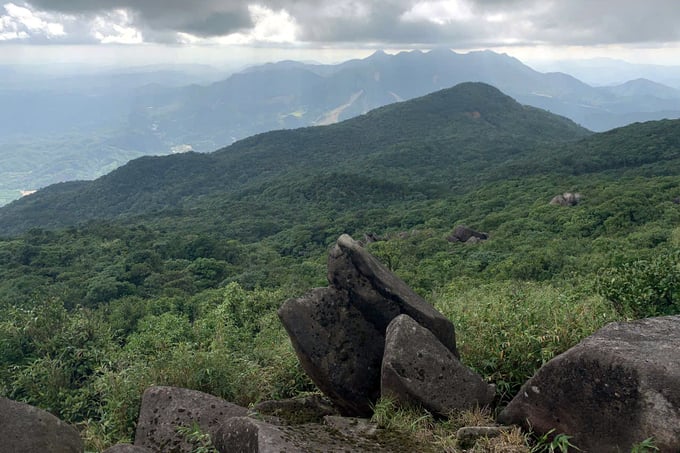
This is an ideal destination for tourism activities. Photo: Bac Huong Hoa Nature Reserve.
Mr. Ha Van Hoan, Director of the Bac Huong Hoa Nature Reserve Management Board, stated that the reserve has significant potential for tourism. Currently, the unit is developing a project on eco-tourism, resort, and recreational activities within the Bac Huong Hoa Nature Reserve, combined with effective implementation of sustainable forest management strategies to ensure the management, use, and development of existing natural resources in a more sustainable manner.
Eligible for a National Park
With its potential and advantages in forest resources, biodiversity, and its role in headwater protection, the conversion of the Bac Huong Hóa Nature Reserve into a national park, as per Decision No. 1737/QĐ-TTg dated December 29, 2023, and Decision No. 895/QĐ-TTg dated August 24, 2024, by the Prime Minister, is essential. This will provide a foundation for Quang Tri Province in general and the Nature Reserve in particular to better manage, protect, develop, and conserve the existing biodiversity, while making a significant contribution to combating global climate change.
Translated by Kieu Chi
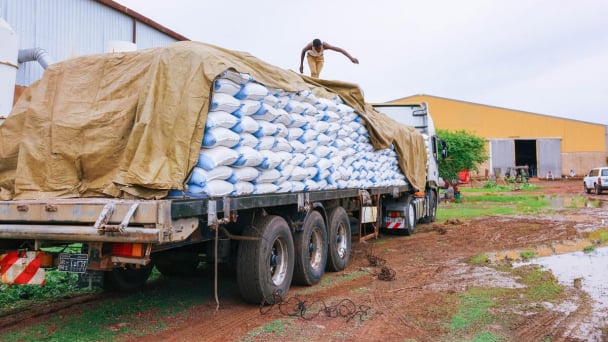
(VAN) In 2024, over 295 million people across 53 countries and territories faced acute hunger—an increase of almost 14 million people compared to 2023, while the number of people facing catastrophic levels of hunger reached a record high.
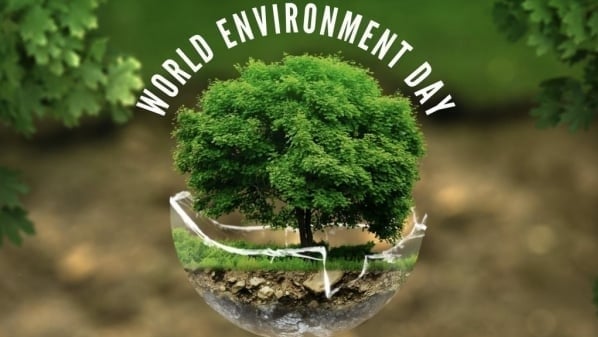
(VAN) World Environment Day 2025 (June 5) carries the theme 'Beat Plastic Pollution' continuing to emphasize the global urgency of addressing the plastic waste crisis.
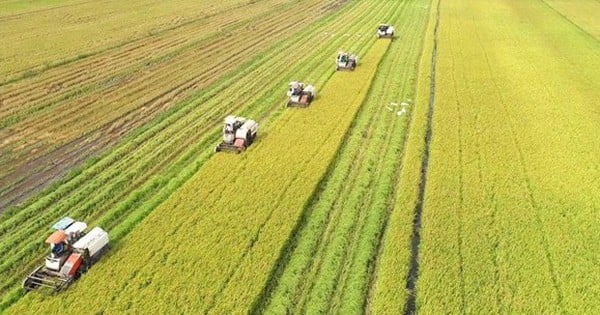
(VAN) This was the assessment shared by experts at the workshop titled 'Assessing the Role and Potential of Low-Emission Rice Production Systems in Vietnam,' held on the morning of May 19.

(VAN) Cai Rong Port is the fisheries control center of Quang Ninh, helping to monitor fishing vessels, combat IUU fishing, and remove the EC's 'yellow card'.
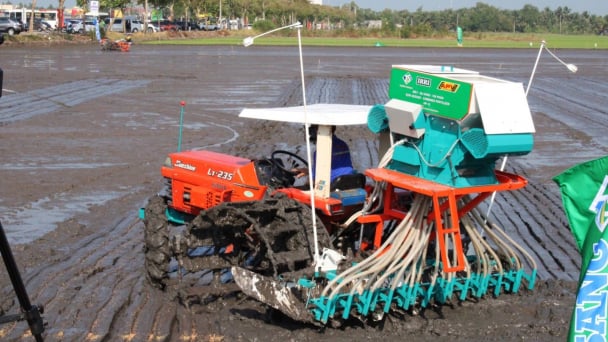
(VAN) The German Agricultural Society (DLG) explores the possibility of establishing a mechanization service center in Vietnam’s Mekong Delta to support farmers in accessing and utilizing advanced machinery.
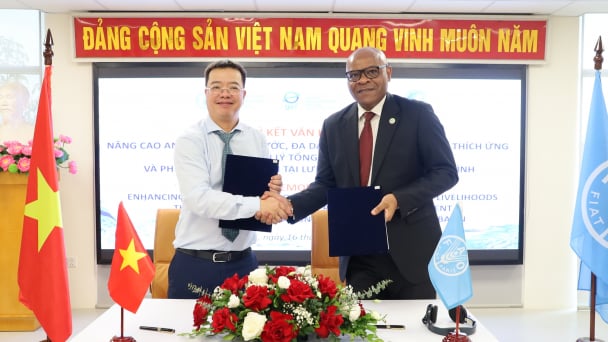
(VAN) On May 16, the Department of Water Resources Management, in collaboration with the Food and Agriculture Organization of the United Nations (FAO), held a signing ceremony for the GEF-8 project document.

(VAN) Food safety, mechanization, vocational training, and market opening are key areas of cooperation expected between the Vietnamese Government and the Federal Republic of Germany.